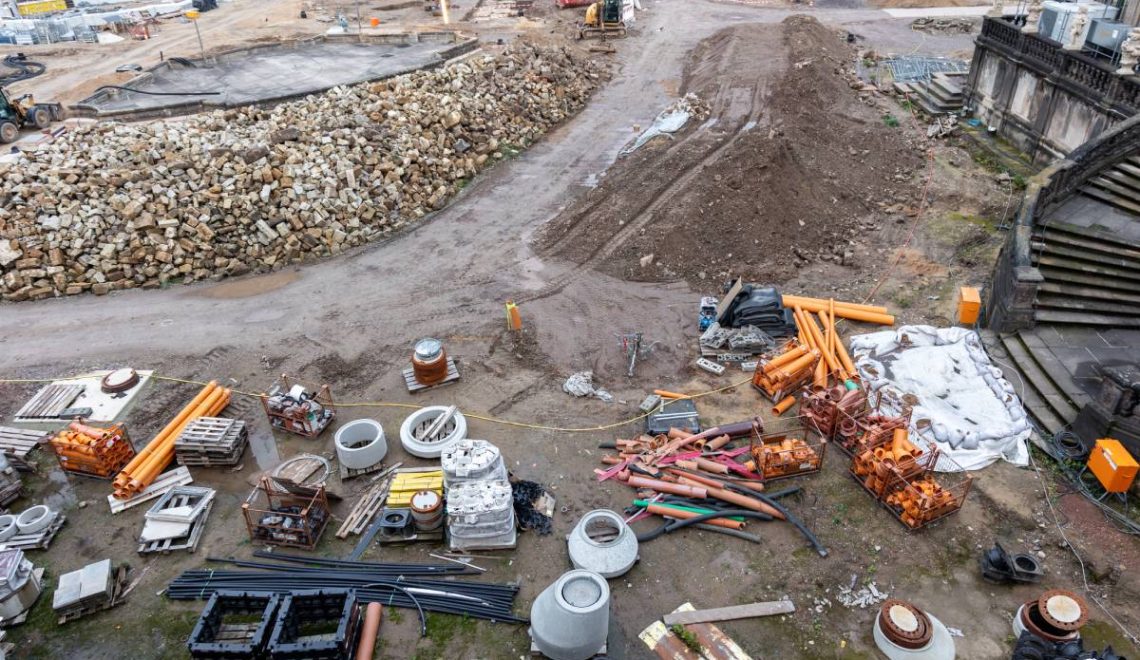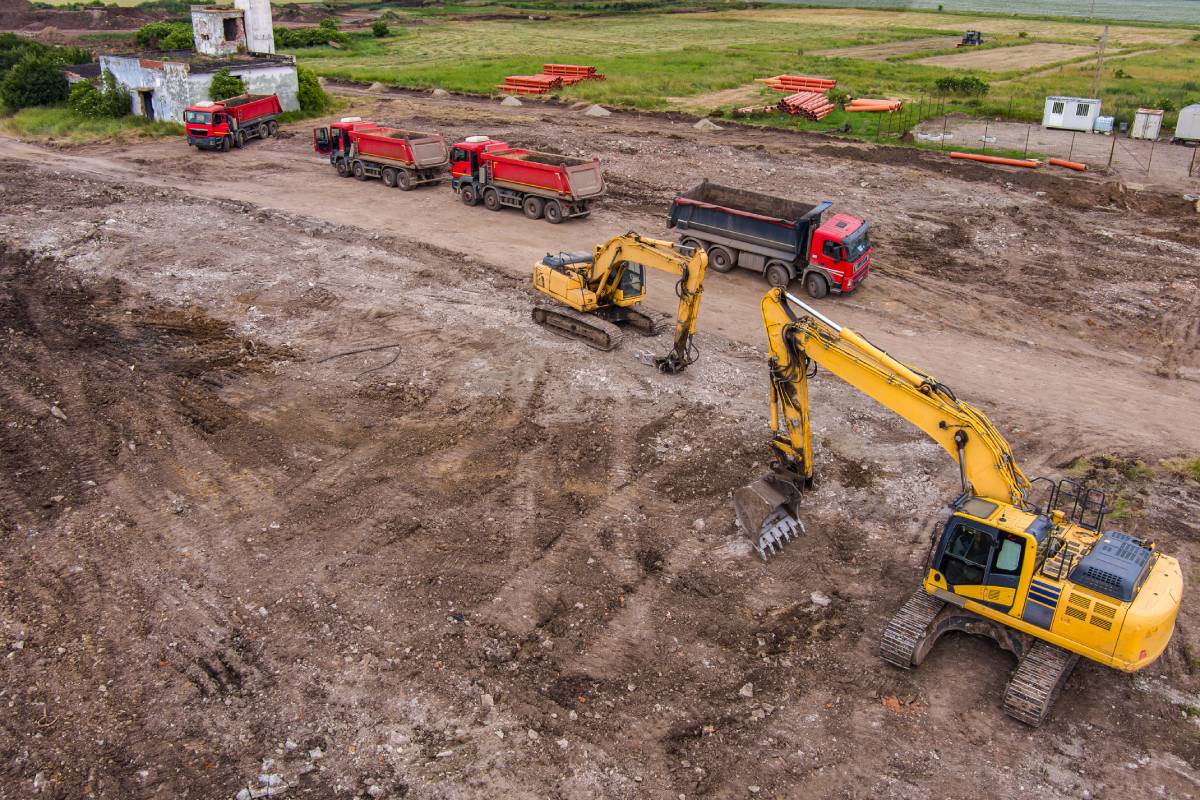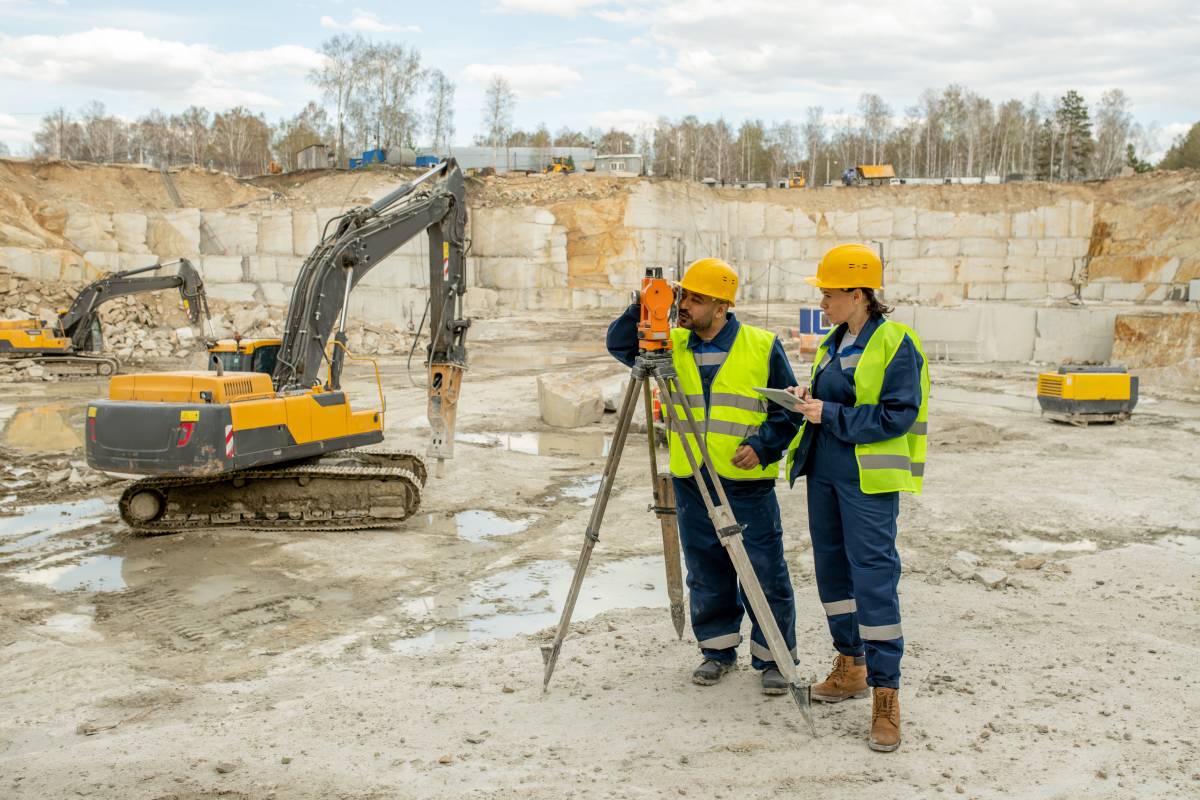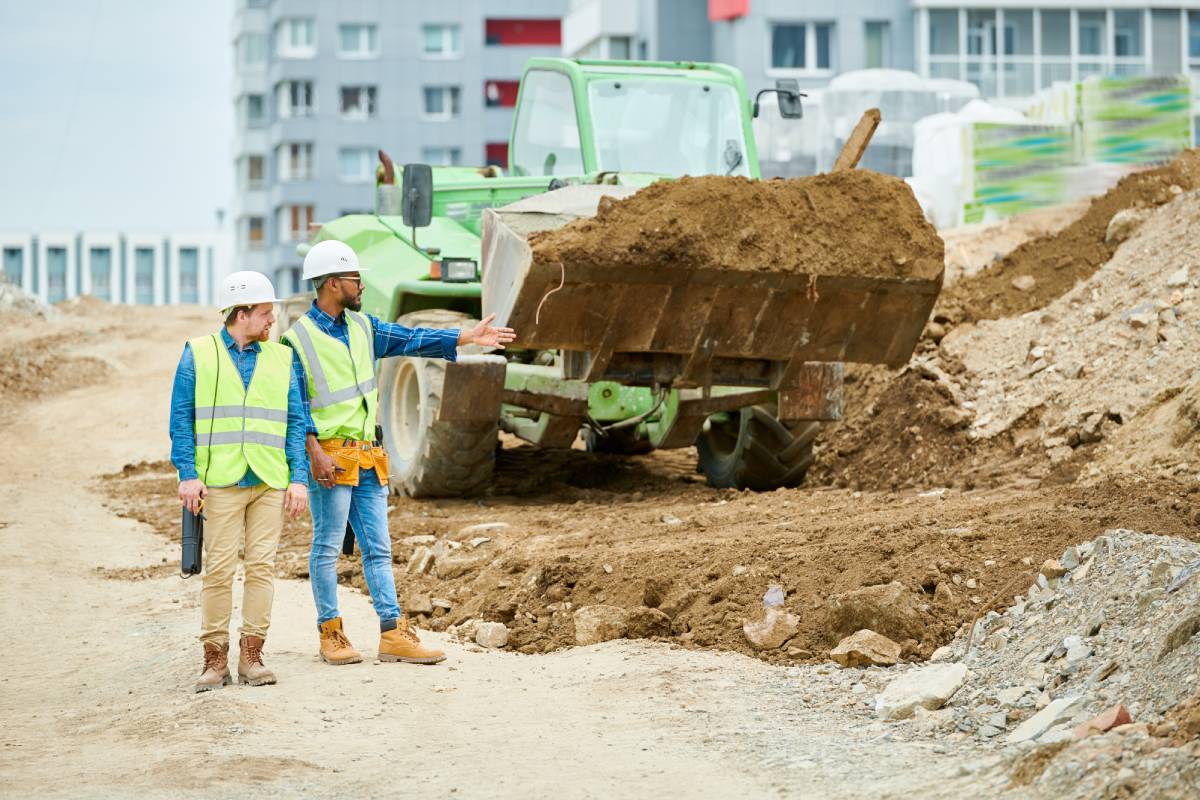
Preparing a construction site for development is a complex and vital process that requires careful planning, skilled labour, and specialized equipment. Site work encompasses a range of tasks aimed at transforming raw land into a suitable foundation for buildings and infrastructure. From excavation and grading to utility installation and surveying, each aspect of site work plays a crucial role in laying the groundwork for successful construction projects.
In this article, we will explore the key equipment and techniques involved in site work, shedding light on the essential tools and machinery that enable the transformation of landscapes into functional spaces for human use and habitation.
What is site work?
Site work refers to the preparatory activities that are necessary before construction or development can begin on a piece of land. These activities are crucial for creating a suitable foundation and infrastructure for the intended project. Site work encompasses a wide range of tasks, including excavation, grading, drainage, and utility installation. Let’s break down these aspects further to understand what site work entails.
Excavation is the process of removing earth or rock from the ground to create space for building foundations, underground utilities, or other structures. Excavation may involve digging trenches, pits, or basements depending on the requirements of the project. It requires heavy machinery such as excavators, bulldozers, and loaders to efficiently remove and relocate soil and debris.
Grading involves shaping the land to achieve the desired elevation and slope for the construction site. This process ensures proper drainage and stability of the foundation. Grading may involve adding or removing soil, compacting the ground, and levelling the surface to meet the specifications outlined in the project plans. It helps prevent water accumulation and erosion, thereby maintaining the integrity of the site.

Drainage is a critical aspect of site work that involves managing surface water to prevent flooding and erosion. Proper drainage systems, including gutters, culverts, and stormwater management facilities, are installed to direct water away from the construction site and surrounding areas. This helps protect the structural integrity of buildings and infrastructure and ensures the safety of occupants and the environment.
Utility installation involves laying underground pipes and cables for essential services such as water supply, sewerage, electricity, gas, and telecommunications. These utilities are vital for the functioning of buildings and infrastructure, and careful planning and installation are necessary to ensure efficiency and reliability. Coordination with utility companies and adherence to regulatory requirements are essential during this phase of site work.
In addition to these primary tasks, site work may also include other activities such as clearing vegetation, removing obstacles, erosion control measures, and environmental remediation. These activities aim to prepare the site for construction while minimizing negative impacts on the environment and neighbouring properties.
Site work is typically the first phase of any construction project and lays the foundation for the successful completion of the development. It requires careful planning, skilled labour, and the use of specialized equipment and materials. Effective site work ensures that the construction site is safe, accessible, and conducive to the efficient execution of subsequent construction activities.
In summary, site work encompasses various preparatory activities required to prepare a piece of land for construction or development. These activities include excavation, grading, drainage, and utility installation, among others. Site work is essential for creating a stable foundation, managing surface water, and installing essential utilities to support the construction of buildings and infrastructure. Effective site work is crucial for the success of any construction project, and it requires careful planning, skilled labour, and adherence to regulatory requirements.
What are the equipment to do site work?
Equipment for site work encompasses a variety of tools and machinery essential for preparing land and executing construction projects. From heavy-duty excavators to precision surveying instruments, each piece serves a specific purpose in ensuring the site is properly graded, excavated, and equipped for further development. Let’s delve into the key equipment used in site work and their functions:
- Excavators: These versatile machines are fundamental to site work, used for digging trenches, removing soil, and clearing debris. Excavators come in various sizes, from compact models like mini excavators for tight spaces to large ones like backhoes for substantial earth-moving tasks.
- Bulldozers: With their powerful blades, bulldozers are indispensable for grading and levelling terrain. They push soil, rocks, and other materials, creating a smooth and uniform surface suitable for construction.
 Loaders: Loaders are adept at transporting materials such as soil, gravel, and debris across the site. Equipped with a bucket at the front, loaders scoop up materials and deposit them into trucks or designated areas.
Loaders: Loaders are adept at transporting materials such as soil, gravel, and debris across the site. Equipped with a bucket at the front, loaders scoop up materials and deposit them into trucks or designated areas.- Graders: Graders specialize in fine-tuning the surface of the land, ensuring precise grading according to the project’s specifications. They level and smooth the terrain to achieve the desired slope and elevation.
- Dump Trucks: Essential for hauling and transporting large volumes of materials, dump trucks carry soil, gravel, and other construction materials to and from the site. Their robust design enables them to navigate rough terrain and deliver materials efficiently.
- Compactors: Compactors are used to compact soil, gravel, or asphalt, increasing its density and stability. By eliminating air voids, compactors create a solid foundation for roads, pavements, and building structures.
- Trenchers: Trenchers are designed for digging narrow, deep trenches required for installing utilities such as pipes, cables, and conduits. They come in various configurations, including chain, wheel, and rock trenchers, depending on the soil type and trench depth.
- Concrete Mixers: For projects requiring concrete, mixers are essential for blending cement, aggregate, and water to produce the desired consistency. They come in different sizes, including portable and stationary models, to accommodate varying project requirements.
- Surveying Instruments: Surveying equipment, such as total stations, GPS receivers, and laser levels, is used to accurately measure and map the site’s topography, boundaries, and elevation changes. This data is crucial for site planning, layout, and ensuring construction aligns with design specifications.
- Utility Vehicles: Utility vehicles, including ATVs and UTVs, provide transportation and mobility across the site for personnel, tools, and materials. They are especially useful in navigating rugged terrain and accessing remote areas.
- Demolition Equipment: In cases where existing structures need to be removed, demolition equipment such as wrecking balls, hydraulic breakers, and concrete crushers are employed to dismantle buildings safely and efficiently.
- Safety Gear: Personal protective equipment (PPE) such as hard hats, safety vests, gloves, and steel-toed boots are essential for workers’ safety on site. Additionally, signage, barriers, and warning lights help maintain a safe work environment and prevent accidents.
How much does site work cost?
The price of site preparation can vary widely, ranging from $5,000 to $70,000, depending on factors like the size and terrain of your land. Here’s a breakdown:
- For a small, flat block in a developed area, expect to pay around $5,000.
- A medium-sized, relatively flat surface might cost around $12,000.
- Larger sites or buildings on sloping terrain could run up to $25,000. If you need extensive retaining walls, tack on another $25,000.
Aside from land preparation, there are other fixed and variable costs to consider, such as permits, soil tests, utility connections, and security measures like fencing or surveillance.
Why do site costs vary? Builders set their own rates, and several factors can drive up the cost:
- Location matters; building in remote areas means higher transportation costs for materials and possible utility challenges.
- Terrain plays a role; expect higher costs for sloping or uneven land, along with additional expenses for removing rocks, trees, or existing structures.
- Soil quality and foundation needs impact costs; sites with clay, limestone, or peat require more preparation for stability, as do areas with underground structures.
- Size and layout influence expenses; larger blocks and multi-story plans naturally incur more work.
- Material choices affect costs; heavy materials like concrete require more effort than lighter options like wood.
Builders often provide estimates with a margin of up to $5,000, though some offer fixed prices. This means a project estimated at $15,000 could cost anywhere from $10,000 to $20,000, depending on the specifics.
In conclusion
Site work lays the groundwork for any construction project, where architectural dreams and infrastructure take shape. It involves a variety of equipment and techniques that showcase the intricate and varied tasks required to prepare the land for building. Heavy-duty machines such as excavators and bulldozers, along with precise surveying and grading tools, each play a crucial role in moulding the terrain and establishing a stable base for upcoming constructions.
Recognizing the significance of site work and dedicating resources to proper equipment and know-how, construction experts can secure the triumph and safety of their endeavours, fostering sustainable progress and expansion in communities globally.


